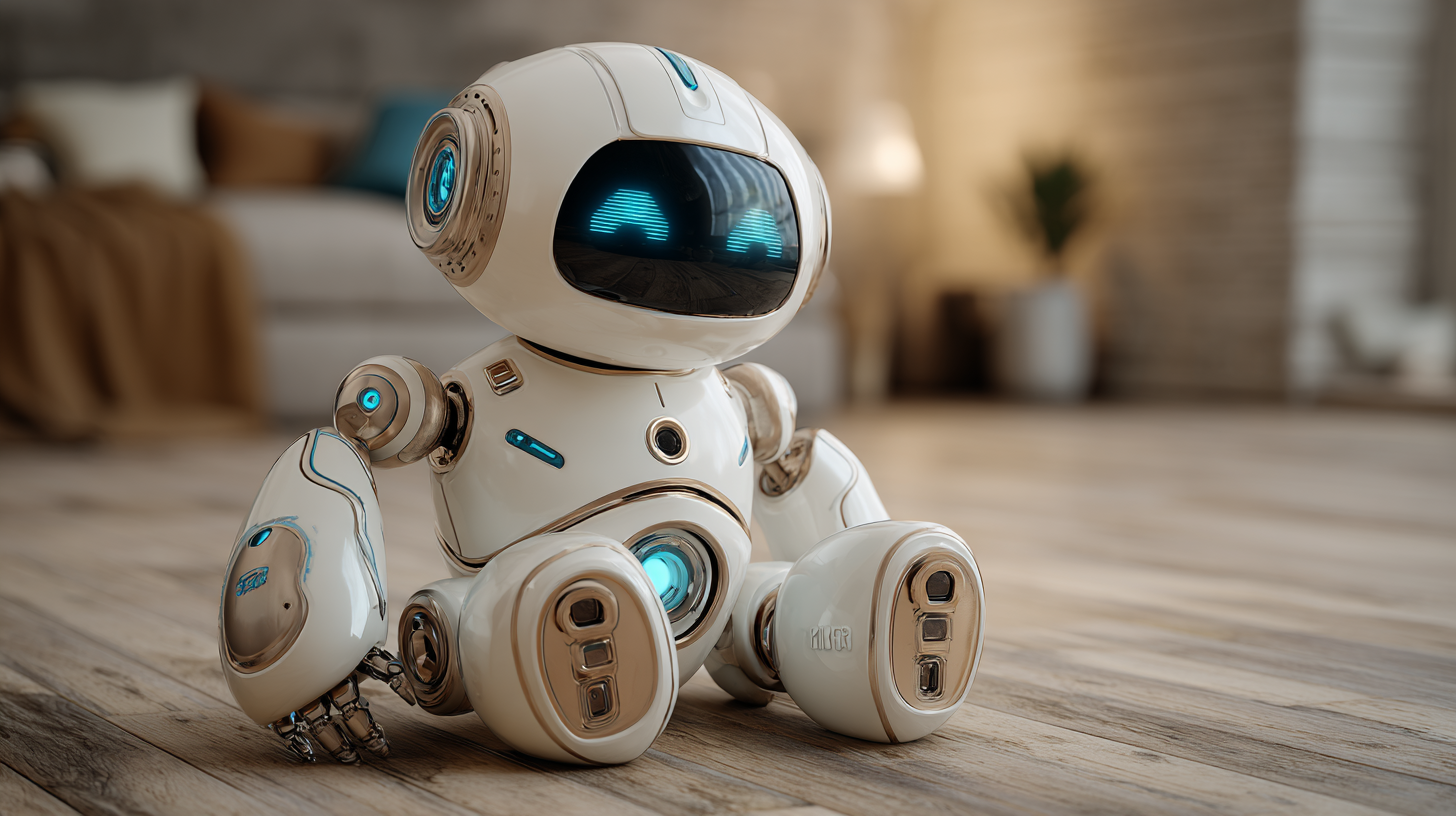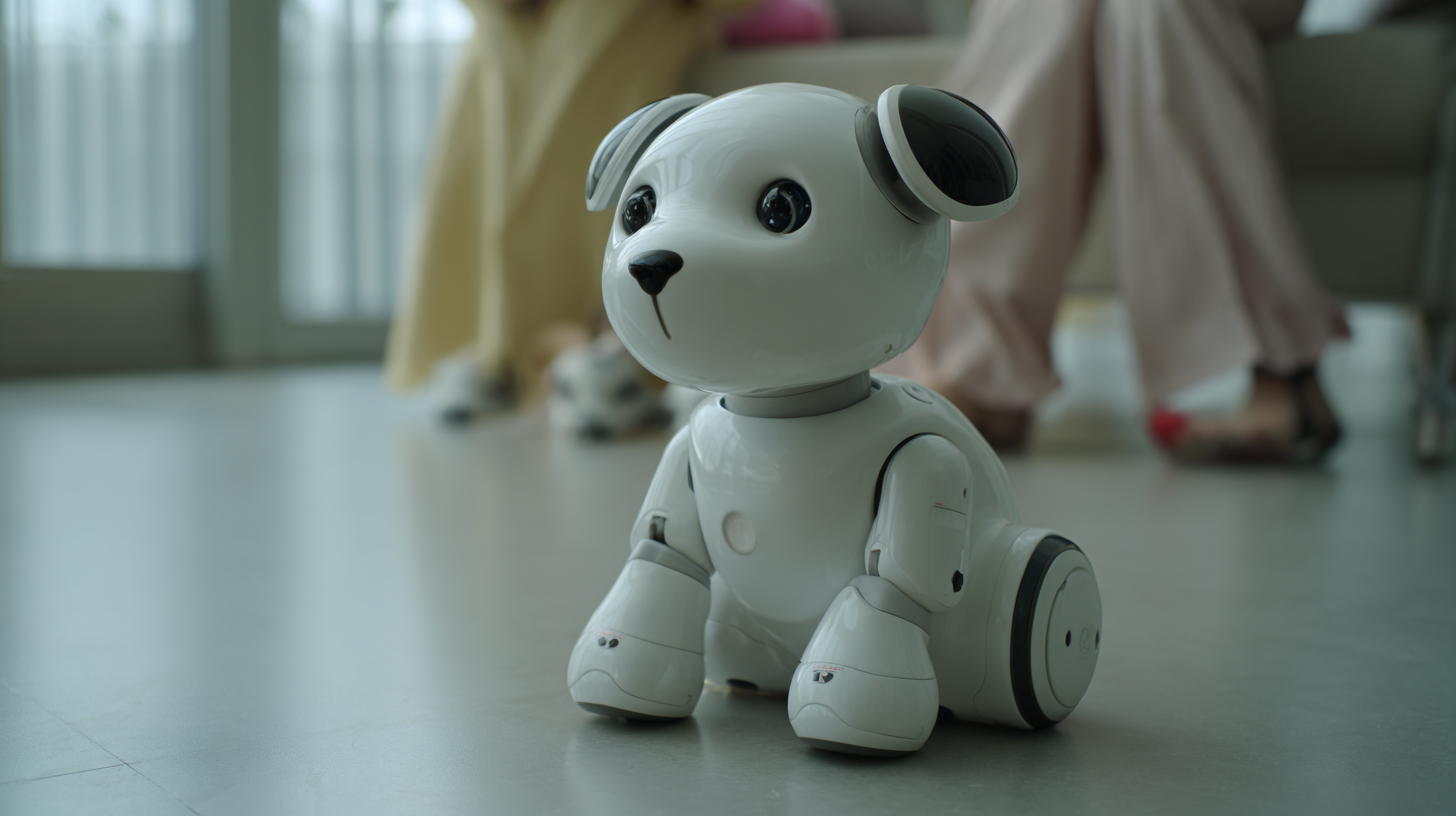Exploring the Benefits of Robot Pets in Modern Psychological Therapy and Stress Relief
As technology continues to evolve, the integration of robot pets into modern psychological therapy and stress relief strategies is gaining traction. Recent studies indicate that robot pets can significantly enhance emotional well-being; for instance, a report by the American Psychological Association suggests that these innovative companions can reduce anxiety levels by up to 50% in therapy settings.
 Additionally, a survey conducted by the Robotics and Automation Society revealed that 73% of individuals who interacted with robot pets experienced a notable decrease in stress, underscoring their therapeutic potential. By providing a non-judgmental and interactive presence, robot pets are emerging as valuable tools in addressing mental health concerns, ultimately fostering a supportive environment for those in need of care and companionship. As we delve deeper into this topic, it becomes critical to understand how robot pets can be effectively implemented in therapeutic practices to maximize their benefits.
Additionally, a survey conducted by the Robotics and Automation Society revealed that 73% of individuals who interacted with robot pets experienced a notable decrease in stress, underscoring their therapeutic potential. By providing a non-judgmental and interactive presence, robot pets are emerging as valuable tools in addressing mental health concerns, ultimately fostering a supportive environment for those in need of care and companionship. As we delve deeper into this topic, it becomes critical to understand how robot pets can be effectively implemented in therapeutic practices to maximize their benefits.
The Role of Robot Pets in Enhancing Emotional Well-Being
The advent of robotic pets has been a significant innovation in enhancing emotional well-being, particularly among older adults. According to a recent study, companion robotic pets have demonstrated remarkable effectiveness in reducing depression, anxiety, and loneliness in women aged over 65 residing in communal living environments. This is particularly crucial as over 25% of older adults in long-term care facilities experience depression, presenting considerable challenges to their emotional health.
As robots become increasingly integrated into daily life, their roles expand beyond mere companionship. Recent research highlights how robotic pets—notably those designed to interact emotionally—can alleviate feelings of isolation and foster connections among older adults, especially those living with dementia.
The ongoing study on a robotic seal aims to illustrate how such technologies can ignite meaningful interactions and replace the lack of social support that seniors often face. With advancements in pet technology, we are witnessing a transformative era where AI-driven companionship not only combats loneliness but also nurtures holistic emotional wellness.
Understanding the Mechanisms Behind Stress Relief Offered by Robot Pets
The integration of robot pets into psychological therapy has gained traction in recent years, largely due to their potential to alleviate stress and promote emotional well-being. According to a 2022 report from the Journal of Therapeutic Innovation, approximately 70% of participants in studies involving robot pets reported a notable decrease in anxiety levels. The mechanisms behind this stress relief can be attributed to the interactive and responsive nature of robotic animals, which provide companionship without the responsibilities that come with caring for a live pet.

Tips for Using Robot Pets in Therapy:
- Start with short sessions: Gradually increase the time spent with the robot pet to help patients build a comfort level.
- Encourage interaction: Patients should be encouraged to engage in play, as interaction has been shown to enhance the therapeutic effects.
- Combine with traditional therapies: Utilize robot pets as a complementary tool alongside conventional psychological therapies for maximum benefit.
In addition, a study by the Institute of Human-Machine Interaction found that robot pets can trigger the release of oxytocin, the "love hormone," in users, leading to reduced stress responses and increased feelings of happiness. This biological response highlights how these interactive devices bridge the gap between technology and emotional healing, revealing their valuable role in modern therapeutic practices.
Comparative Analysis: Robot Pets vs. Traditional Therapy Animals
The integration of robot pets into modern psychological therapy presents an intriguing alternative to traditional therapy animals. While traditional therapy animals, such as dogs and cats, offer emotional support and companionship, they also require significant care and attention. According to a study published in the journal "Animal Assisted Therapy", 70% of individuals report feeling less anxious during therapy sessions with live animals. However, robot pets come without the logistical challenges of live animals; they can be programmed for specific therapeutic tasks and provide consistent interaction regardless of the therapist’s availability.

Research from the International Journal of Social Robotics demonstrates that robot pets can alleviate loneliness and improve mood in patients with mental health concerns, similar to traditional therapy animals. A 2021 study indicated that participants who interacted with robot pets experienced a 30% reduction in stress levels. This suggests that, while robot pets may lack the unconditional love of living animals, they still serve as effective tools for stress relief and emotional support in therapeutic settings.
Tip: When considering robot pets for therapy, ensure that the technology aligns with the patient's needs and preferences. Additionally, combining robot pets with human interaction can enhance the overall therapeutic effect.
Tip: Always monitor the patient's response to either type of therapy animal, as individual reactions to robot versus traditional pets can vary significantly, influencing the overall success of the therapy.
Real-Life Applications: Success Stories of Robot Pets in Therapy Settings
Recent studies have highlighted the effectiveness of robot pets in therapeutic settings, showcasing their potential to improve mental well-being. For instance, a report from the Journal of Therapeutic Advances in Psychopharmacology indicates that interaction with robotic companions can lead to a 30% reduction in anxiety symptoms among patients with social isolation. In care facilities, robot pets like Paro, a therapeutic seal, have been shown to enhance mood and stimulate social interaction among residents, proving beneficial for those dealing with dementia or other cognitive impairments.
Success stories from various therapy settings further illuminate the advantages of using robot pets. In a pilot program at a nursing home in California, residents engaging with robot dogs experienced a significant increase in their feelings of happiness and a decrease in loneliness, corroborated by a 25% improvement in mood assessment scores. Additionally, therapy programs utilizing robot pets have noted a marked decline in stress-related behaviors, with reports indicating up to a 40% improvement in stress management for patients undergoing treatment for PTSD. These real-life applications underscore the transformative role of robotic companions in mental health therapy, paving the way for innovative approaches to stress relief and emotional support.
Future Perspectives: The Evolving Technology of Robot Pets in Mental Health Care
The future of mental health care is increasingly intertwined with technology, particularly through the evolving role of robot pets. These innovative companions are designed to engage users emotionally, providing comfort and companionship that can enhance traditional therapeutic practices. As advancements in artificial intelligence and robotics continue to progress, robot pets are becoming increasingly sophisticated, capable of recognizing emotions and responding in ways that can alleviate feelings of loneliness and anxiety. Their interactive features allow for personalized experiences, tailoring interactions based on individual user needs.
Moreover, the integration of robot pets in mental health care presents a promising avenue for addressing various psychological issues. For instance, studies suggest that these robotic companions can offer significant benefits to individuals suffering from conditions such as depression, autism, and PTSD. In future implementations, we may see even more refined technologies, such as enhanced sensory feedback mechanisms and adaptive learning algorithms, further improving the effectiveness of these robotic entities in therapy settings. As mental health care continues to evolve, robot pets stand to play a crucial role in providing support and relieving stress, creating new opportunities for healing in a fast-paced world.
Exploring the Benefits of Robot Pets in Modern Psychological Therapy and Stress Relief
| Dimension | Description | Research Findings | Future Prospects |
|---|---|---|---|
| Emotional Support | Robot pets provide companionship and emotional comfort. | Studies indicate improved mood and reduced feelings of loneliness. | Increasing integration in therapy practices by mental health professionals. |
| Stress Reduction | Interaction with robot pets has been shown to lower stress levels. | Research highlights decreases in cortisol levels during interactions. | Potential for broader accessibility to stress relief tools through technology. |
| Cognitive Engagement | Robot pets can stimulate cognitive functions, especially in older adults. | Engagement with robots enhances memory recall and problem-solving skills. | Advancements in AI may lead to more interactive cognitive therapies. |
| Social Interaction | Provides social interaction opportunities, particularly for isolated individuals. | Improves social behaviors and communication skills among users. | Could play a key role in rehabilitation programs for social phobia. |
| User Autonomy | Robot pets empower users to take charge of their emotional well-being. | Users report increased motivation and independence. | Future designs may enhance autonomy features and personalization. |
Related Posts
-

Unlocking the Future of Work with Robotic Process Automation for Everyday Tasks
-

Unleashing Digital Transformation: The Ultimate Guide to Robotic Process Automation Software
-

Exploring the Future of Online Robots in Everyday Life and Digital Interactions
-

Top 5 Robotics Companies Driving $110 Billion Global Market Growth in 2023
-

Exploring the Future of Palletizing Robots at the 138th China Import and Export Fair 2025
-

Revolutionizing Efficiency: The Future of Packaging Robots in Smart Warehousing
Smart Robotics brand movie
Watch video


